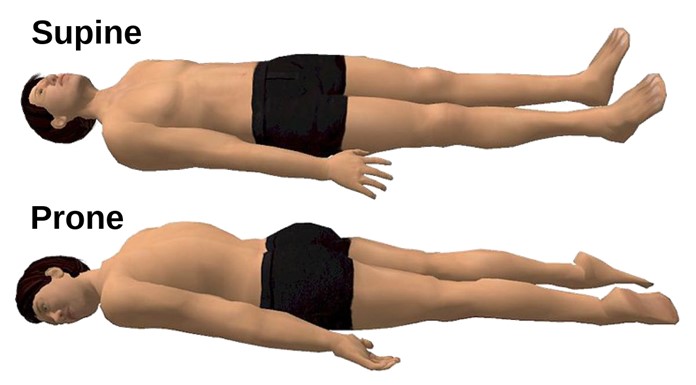A nurse is reinforcing teaching about self-administration of nasal drops with a client. Which of the following positions should the nurse recommend for instillation of the drops?
Sims
Prone
Supine
Orthopneic
The Correct Answer is C
When instructing a client on self-administration of nasal drops, the nurse should recommend the supine position. In the supine position, the client lies on their back with the head slightly elevated. This position allows for easy access to the nostrils and facilitates the proper instillation of the nasal drops.
The other options are not recommended for instillation of nasal drops for various reasons:
a) Sims position: Sims position is a side-lying position with the upper leg flexed. This position is often used for rectal examinations or procedures and is not suitable for instilling nasal drops.
b) Prone position: Prone position refers to lying face down. It is not ideal for administering nasal drops as it
can obstruct proper access to the nostrils and make it difficult to instill the drops accurately.
d) Orthopneic position: Orthopneic position is a sitting position with the upper body supported by pillows. It is commonly used by individuals with respiratory distress to facilitate breathing. However, it is not specifically recommended for administering nasal drops as it may not provide optimal access to the nostrils for proper instillation.

Nursing Test Bank
Naxlex Comprehensive Predictor Exams
Related Questions
Correct Answer is C
Explanation
The correct answer and explanation is:
c. Denial
The nurse should identify that the client is experiencing the stage of denial in the grief process. Denial is a common psychological defense mechanism that individuals may exhibit when faced with a stressful or overwhelming situation, such as the prospect of open heart surgery. It involves a refusal to accept or acknowledge the reality of the situation. In this case, the client's statement of being confident to go home shortly after surgery demonstrates a denial of the potential challenges and recovery process associated with such a procedure.
Explanation for the other options:
A . Anger: Anger is a stage of grief characterized by feelings of resentment, frustration, and hostility. It is common for individuals to experience anger as part of the grief process, but the client's statement does not indicate anger.
B. Depression: Depression is another stage of grief marked by feelings of sadness, hopelessness, and loss. While it is normal for individuals to experience some level of anxiety or sadness before undergoing surgery, the client's statement does not specifically reflect depression.
d. Acceptance: Acceptance is the final stage of grief, where individuals come to terms with their situation and find a sense of peace or resolution. The client's statement indicates a lack of acceptance as they are denying the potential impact of the surgery and its recovery process.

Correct Answer is D
Explanation
The nurse should recognize that the client needs a referral for diabetic education when the client lists sweating, shaking, and palpitations as symptoms of hyperglycemia. These symptoms are actually associated with hypoglycemia, not hyperglycemia. Hyperglycemia is characterized by symptoms such as increased thirst, frequent urination, and fatigue.
Option a is incorrect because drawing up regular insulin before NPH when demonstrating injection technique is the correct procedure.
Option b is incorrect because seeing a primary care provider to treat corns on the feet is an appropriate action for a client with diabetes.
Option c is incorrect because treating hypoglycemic reactions with 15 g of carbohydrates is the recommended treatment.
Whether you are a student looking to ace your exams or a practicing nurse seeking to enhance your expertise , our nursing education contents will empower you with the confidence and competence to make a difference in the lives of patients and become a respected leader in the healthcare field.
Visit Naxlex, invest in your future and unlock endless possibilities with our unparalleled nursing education contents today
Report Wrong Answer on the Current Question
Do you disagree with the answer? If yes, what is your expected answer? Explain.
Kindly be descriptive with the issue you are facing.
